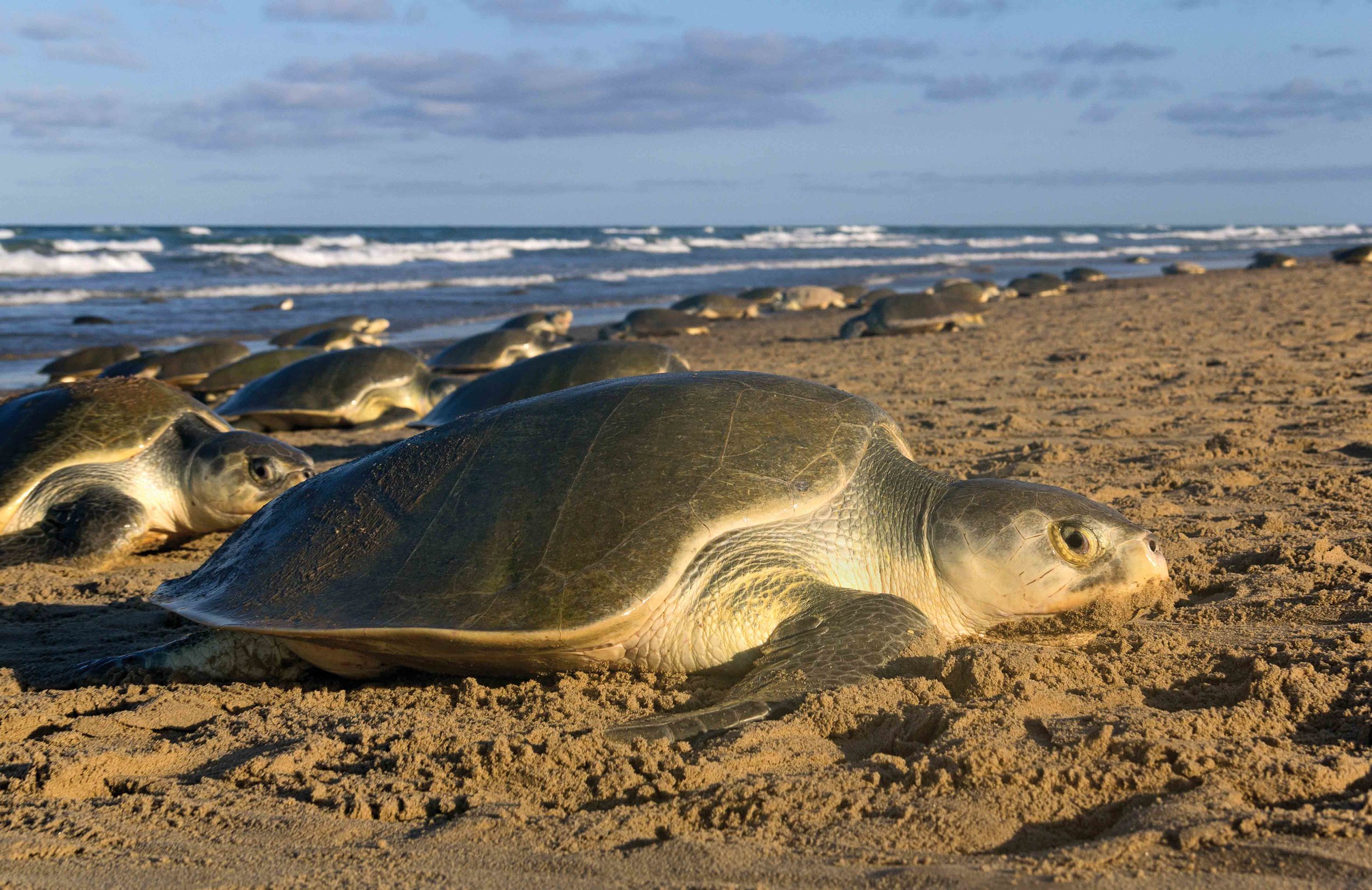

Scientific Name
Lepidochelys kempii

Conservation status
Endangered

Population
Declining

Average lifespan
30 – 50 years

Average adult weight
36 – 43 Kgs

Average adult size
55 – 76 cm

Biogeographic realm
The Gulf of Mexico, U.S. Atlantic seaboard, from Florida to New England, Azores, waters of Morocco, Mediterranean Sea, and around the Atlantic Basin.
This species was named after Richard M. Kemp, a fisherman who first reported the species for identification. They have a dark grey-green carapace and a yellowish-brown plastron, and the carapace is frequently equal in width and length, with five pairs of costal scutes. Its head is triangular shaped and possess a slightly hooked beak. The front flippers, each have one claw, whilst the back flippers may have one or two. This species is considered the smallest and most endangered turtle. Their average lifespan is between 30 and 50 years. Kemp’s Ridleys reach sexual maturity between the ages of 10 and 15 years, and females lay 2 to 3 clutches of 100 eggs, which incubate for 50 to 60 days. Kemp’s Ridley’s food is primarily composed of swimming crabs, although it may also contain fish, jellyfish, and a variety of mollusks. The majority of Kemp’s Ridley nesting occurs on the beaches of the western Gulf of Mexico, although they have also been discovered along the United States Atlantic coast, from Florida to New England, in the Azores, Moroccan, Mediterranean, and other Atlantic Basin waters. Kemp’s Ridleys are frequently found in estuaries, particularly close or in shallow seagrass beds. Bycatch in fishing gear, changes in the climate, direct collection of turtles and eggs nesting habitat loss and degradation of marine debris and ocean pollution, predation on eggs and hatchlings, as well as vessel strikes, are common threats to turtles, including Kemp’s Ridley.

